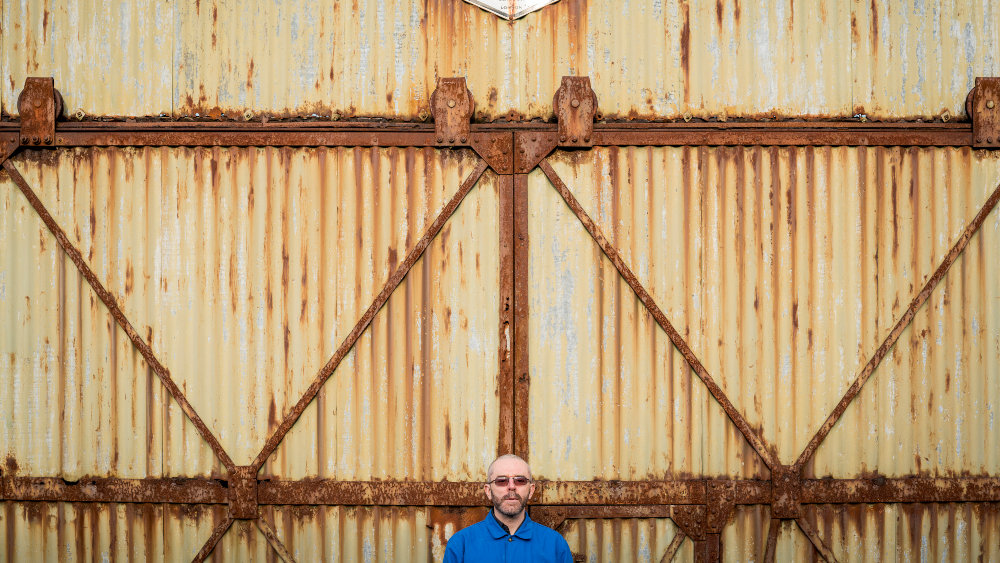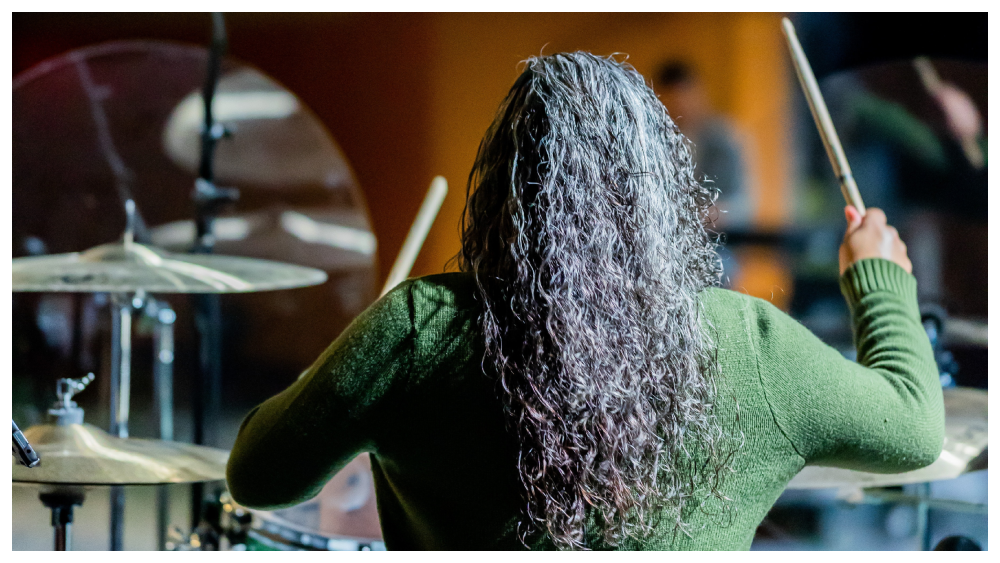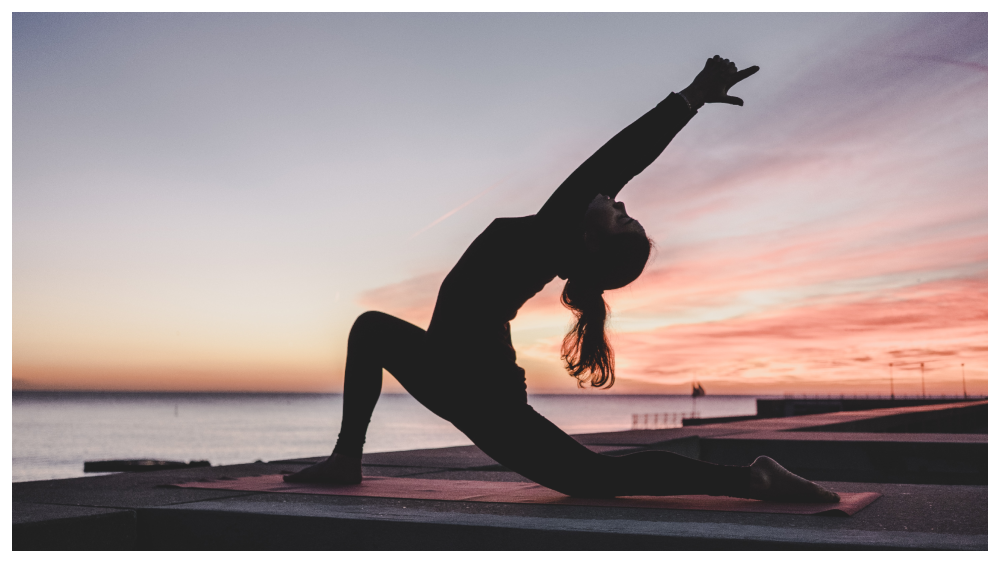Primarily, Rupert works as a musician, producer and music tutor, but after he developed tinnitus at a young age he began working on an app to help people with the condition.
T-Minus was created in collaboration with hearing therapists, audiologists and ENT consultants and offers sufferers personalised self-treatment through a sound therapy library and more.
One in eight UK adults suffer from Tinnitus, many of which are from the music community, yet a lack of conclusive medical research means many continue to suffer.
This week marks Tinnitus Awareness Week 2020, so we caught up with Rupert to chat about his experience of living with tinnitus as a musician and how he went about developing T-Minus…
Can you tell us a little about when you first developed tinnitus and what affect it’s had on your career and life?
My story with tinnitus started at the age of 22. I had a terrible hearing accident playing a musical concert. I was playing with Roy Ayers (American legend vibraphone player) at Ronnie Scott’s Jazz Club. As I came off stage, I noticed a huge problem with the hearing in my left ear. As I left the club to find my car, I was struck down with this terrible realisation that I was experiencing the sudden onset of tinnitus. I was profoundly deaf in my ear at the time and was experiencing ‘eight’ different sounds and noises; ranging from tones, screams, bells and thunder.
The terrifying isolation that I felt was instantaneous and I knew straight away that this was going to be life changing. It has definitely had a dramatic effect on my life but I would honestly say that my career progressed and improved once I got control of my tinnitus and started to manage it. I discovered a new awareness within myself and had a completely different sensitivity towards sound and to the tones I was making, everything had more depth to it as I was able to at last find the truth in it all!
I went on to play with some wonderful artists: Nigel Kennedy (tours and album), Cher (album), The Lighthouse Family (albums), Darryl Hall (album), Robbie Robertson (album) and on Jarle Bernhoft’s Grammy nominated album (playing drums) to name just a few. I even ran a community Samba band with 111 members in it.
Prior to the app, how did you manage your symptoms?
I experimented with a simple tape cassette player and messed about with turning up the volume whilst pressing on the record pause button. This gave me one bright hiss sound. Quickly I progressed to making different types of coloured white noises and Hz tones from different electronic devices and synthesis.
After bathing myself in these sounds day and night I was able to slowly take back control of my hearing system and life again. Hyperacusis (hyper sensitivity to sound and how you perceive sound) was also an issue with me, so therefore other techniques were employed; e.g. going out very late at night and walking around town and by the ocean to bathe in natural and unnatural auditory environments.
The eight tinnitus sounds started to become six and then five, four, three, two, and I was finally left with one hissy sound which I could cope with and I was comfortable to live with it.
If it wasn’t for the primitive sound therapy that I was using at the time I’m not sure it would have been possible to manage a way of navigating myself out of the tinnitus maze. It was essential now to completely get my musical life back on track and so I started to pick up the pieces from my shattered career and start back on the road to a new exciting journey.
Considering one in eight adults in the UK suffer with tinnitus, do you think enough is being done to support people with it or enough research being carried out to develop therapies?
Tinnitus is wildly underfunded and I’m stunned at how little awareness there is towards this hearing health epidemic. I think the British Tinnitus Association have been incredible in helping to create awareness and giving the much-needed support for the tinnitus community.
When I was at my lowest ebb with the condition, I remember phoning the BTA helpline and the advice I got was truly supportive and sensitive beyond words. For that I will be forever thankful. But I think because it is such a multifaceted condition it is incredibly difficult to get to the bottom of this problem. Tinnitus can be brought on by many situations: hearing accident, deteriorating hearing loss, a sudden bereavement, whiplash, chemotherapy and other subsequent reactions to certain drugs. The list goes on.
This means it’s very difficult to treat, is it in the ear? Is it in the brain? Is it emotional? It’s very difficult but at the same time I don’t think there is enough research going on. But what I can say is that proper sound therapy working together with professional hearing therapy (counselling) really can make a huge different to a tinnitus patients’ ability to take back the control.
What more do you think can be done to raise awareness and prevent musicians from developing the condition in the first place?
I worked as a lecturer for a music college for 18 years and I was particularly keen to ensure that all of the students were given ear plugs and that they were free. I know that nearly all music colleges engage in ear health and wellbeing. Construction workers and other industries have strict guidelines now in place, whether they take notice or not I couldn’t be sure. I’m still shocked to see how many road workers do not wear ear protection. There is nothing macho about having hearing loss and raging tinnitus.
Public places could do a lot more to raise awareness; gyms and aqua aerobics classes are too loud. I go to some of these activities but I have to wear ear plugs as the noise is really loud, comparable to being in a loud night club. The music is intoxicatingly loud to the point of having your senses numbed. You may come out with a fabulous bum but you’re going to incur the early signs of hearing damage, is it worth it?
Can you tell us about the early stages of the app’s development?
To begin with when I made the first two series of music, I was struggling to find a vehicle to house the music. I wasn’t sure that CDs were the future for launching tinnitus sound therapy music. I had a meeting with a friend of mine, Simon Rodley; he and his son James run a boutique record label and I knew that they had been investing heavily in cutting edge app technology and they were using this medium to help promote one of their artists. I was convinced that an app would be the ultimate way of housing the ‘collection’. I had one meeting and we shook hands and two years later we’ve achieved a first-class app that is fit for purpose.
One of the unsung heroes is the creative force and hyper mind who made the app. His name is Andrew Fox. We would have countless meetings and wrestle with all sorts of combinations etc. But the work that Andrew did was both refreshingly conceptual and intuitive for the user. I loved the way that Andrew wanted to keep things both innovative and simple. The idea of the carousel was ingenious. It felt like the old days of the record shops where you could flick through the LP’s and select your choice so quickly and easily.
And how did you collaborate with hearing therapists, audiologists and ENT consultants to create T-Minus?
When I had a terrible recurrence of tinnitus and hyperacusis I needed help. I was advised to go private and seek out an amazing hearing therapist called Penny Stannard. I saw her for one afternoon and in that time I was re-booted and re-educated. This gave me the tools (alongside sound therapy) to start my recovery. Therefore, right from the outset I used Penny as a sounding board to make sure that what I was doing had some degree of validation.
At the same time, I went to the hospital to meet Sreeshyla Basavaraj, or Raj for short, an ENT surgeon at St. Mary’s Hospital on the Isle of Wight. He offered so much support and guidance and really added gravity to our mission to create the world’s best tinnitus app.
Susan Poole (NHS Audiologist) and Sam Woodford (Audiologist) both audiologists have been incredibly supportive and have offered superb advice and Susan is starting up an Isle of Wight tinnitus group. T-Minus will be there at every session to support it.
As a musician I come from a culture of ‘sharing’ and I was surprised and pleased that the medical profession has been so open and helpful as they are also frustrated by the lack of support that tinnitus gets.
How does the app work to alleviate the symptoms of tinnitus?
The app has many dimensions of healing therapies…
1. The music is embedded with either natural or unnaturally occurring Hz sounds, tones or other types of white noises.
2. I have carefully recorded these sounds in real time – meaning that they are not looped – this gives the listener a chance to fully explore the natural length of the journey that they are about to embark on. Each album lasts nearly 50 minutes.
3. As I have sadly experienced a wide range of tinnitus symptoms, I therefore understand how to create them and work them. By targeting the specific tones that the listener might have I’m able to immediately give the listener the chance to park their own sounds somewhere else. Penny Stannard (sound therapist) said this about the music I’d created and Penny has tinnitus.
‘I hide inside the cocoon of your sounds Rupert and my tinnitus can’t find me!’
After those sounds are embedded into the music, I’m able to then offer other tones and Hz sounds into the equation thus giving the brain the chance to refocus and look elsewhere for a new sound source. It’s important that the music isn’t both classical or new age. I want the listener to be taken somewhere completely different and create a brand-new sound reality. Each track contains the frequency Range; e.g. 400Hz/10,000Hz
4. Also, in the app we have a tone control and coloured white noise window. This contains an array of different white noises. For my tinnitus I find that coloured white noises work beautifully for my needs. When a person typically has a hearing loss induced tinnitus it can present itself with the loss being in the 8,000 / 10,000 range. Alternately we have a wide range of Hz tones (frequencies) that can also present themselves as tinnitus type noises.
I find this a very useful feature when trying to locate someone’s tinnitus noises. It’s an incredibly powerful moment when working with somebody and you’re able to fairly quickly find the individual’s tinnitus. For them it’s powerful as they are able to transmit to family and friends ‘their sound’. It can be both cathartic and empowering. These white noises and Hz tones can be controlled separately and also blended with the main therapy music if so desired.
Can you talk about how you collated the ‘Mind Environments’?
I have travelled round the world to collect my environmental ‘found’ sounds. E.g. I would travel to Cuba to get the sounds of the Rain Forest, or to the South of France to get the sound of a Citroen 2CV turning its steering wheel on a gravel driveway. Steam trains and steam boats were recorded either on the Isle of Wight or Swanage or the Lake District.
One of the surprising sounds that I recorded was the London Underground. When you’re in it (as I was for two days) it is full of different sound sources and the tunnels are filled with emotion. Whether it’s lovers saying goodbye, musicians busking or the footsteps made by Brogues or Stilettos skipping up the stairs. It’s all there, all the frequencies exist within the tunnels of London.
Bringing these sounds back to the studio and mixing them was so soothing and beautiful to bathe in. To sum up; sounds of the sea, beaches, nature and forests were collected from lots of places in the world and birds sang wherever I travelled.
What has been the musical highlight of your career so far?
I have had so many musical highlights. I’m truly blessed but it would have to be the time I was given the chance to play with Roy Ayers and be accepted into a predominantly African American group and told by the great man himself, Roy Ayers: ‘Don’t start trippin’ man, but you’re Black.’ It’s my greatest achievement, but this is the ‘ground zero’ of my tinnitus.
I’ve no regrets as I’m so proud to be able to present my ultimate achievement which is obviously the creation of T-Minus. This is for ‘our’ tinnitus community.
What advice do you have for musicians just starting out in music?
I would suggest quite simply that when starting out, love what you are doing and pay close attention to tone, sound and melody. But buy some earplugs first and don’t play your music too loud through headphones please.
Rupert starred in a BBC documentary showcasing the benefits of the app and how to use it last night, you can watch here.





